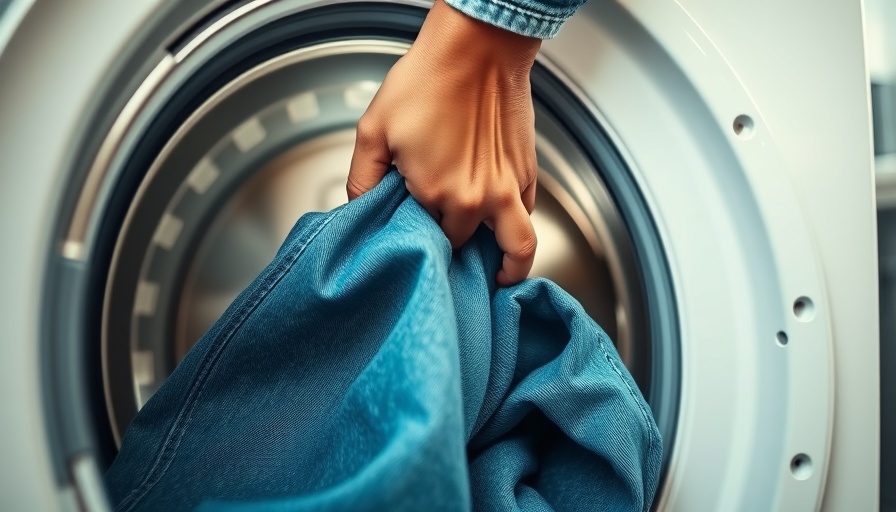
Unlocking the Power of Your Washing Machine: Essential Cycles Explained
Washing machines have evolved substantially over the years, transforming from simple agitators to sophisticated appliances equipped with specialized cycles. Understanding these settings can make a significant difference not only in achieving cleaner clothes but also in extending their lifespan. Have you ever pondered whether that common quick wash is truly adequate for your laundry load? This guide unpacks the various washing machine cycles so you can get the most out of your appliance.
Pre-Soaking: The Unsung Hero for Stains
Imagine you’ve just returned from an active day, and your clothes are covered in stains. This is where the pre-soak cycle comes into play, allowing your garments to soak in a detergent solution before the main wash. Typically lasting between 15 to 30 minutes, this cycle is ideal for jerseys, muddy pants, and towels that have accumulated grime. Integrating this key step can boost stain removal significantly, making it indispensable for busy households.
Speed Wash: Quick Refresh for Light Loads
Sometimes, you only need to freshen up a shirt or towel that’s seen limited action. Enter the speed wash cycle, designed to tackle lightly soiled laundry efficiently. Not only does it save time—or when you're in a rush for that meeting—it also conserves water. However, be cautious not to overload the machine; doing so can hinder the cleaning process and lead to musty odors.
Colors Cycle: Preserving Vibrancy
Your colorful wardrobe deserves special care. The colors cycle, reminiscent of the old permanent press settings, is formulated for fabrics that need gentle treatment. It typically uses cooler water and minimizes wrinkling while ensuring that colors remain bold and bright. Using this cycle can extend the life of your favorite outfits, allowing you to maximize your investments in clothing.
Bulky or Bedding Cycle: For the Heavyweights
For larger items like comforters or sleeping bags, the bulky cycle takes center stage. This setting often uses more water and maintains a longer wash time, guaranteeing that everything is fully saturated and effectively cleansed. Not only does it deliver optimum results for heavy items, but it also prevents damage by ensuring proper care, which is essential for high-quality bedding materials.
Delicates Cycle: Gentle on Fabrics
Don’t be tempted to throw all your laundry into one cycle! The delicates cycle is crucial for more fragile fabrics, such as silk or lace. By employing a gentler wash action and a reduced spin speed, this cycle safeguards your favorite garments from wear and tear. It’s a simple step to enhance longevity and avoid costly replacements.
Sanitize Cycle: A Healthier Choice
In a health-conscious world, the sanitize cycle has stepped up, utilizing high heat that eliminates bacteria and allergens. Ideal for items exposed to germs, like gym clothes or dish towels, this feature is vital for households where health is a priority. Yet, it’s essential to avoid using this cycle on everyday items or delicate fabrics to maintain their integrity.
Rinse and Spin: Final Touch for Clean Laundry
If you frequently face residues from detergent or a lingering odor, the rinse and spin cycle is your go-to solution. It efficiently removes any lingering soap or dirt without needing to wash the items again, saving you both time and resources. This cycle is particularly useful when friends arrive unexpectedly, and you suddenly realize your laundry needs a little more TLC.
Meta Trends and Future Predictions for Washing Machines
As we move forward in the realm of home technology, we can expect smarter washing machines equipped with advanced artificial intelligence. Future models may offer personalized cycles based on fabric types or past usage patterns, making them even more efficient. Beyond just getting clothes clean, innovations will look at sustainability, helping consumers reduce their water and energy consumption while also enhancing cleaning performance.
Decisions You Can Make With This Information
Being aware of these washing machine cycles allows you to make informed decisions that not only improve your laundry results but also prolong the life of your garments. By selecting the right cycle for the right clothes, you’ll achieve optimal cleaning results while being environmentally conscious. Every cycle has its purpose—now you can leverage that knowledge!
 Add Row
Add Row  Add
Add 




Write A Comment